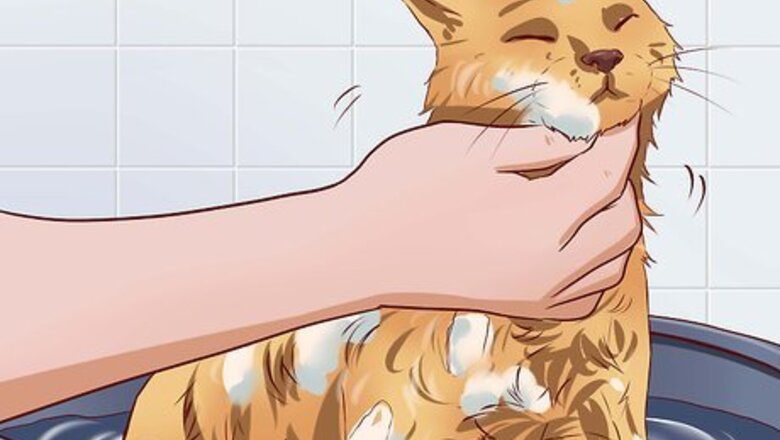
views
X
Research source
There are several steps you can try to avoid cat scratches and help your cat tolerate a bath.
Preparing Your Cat for a Bath
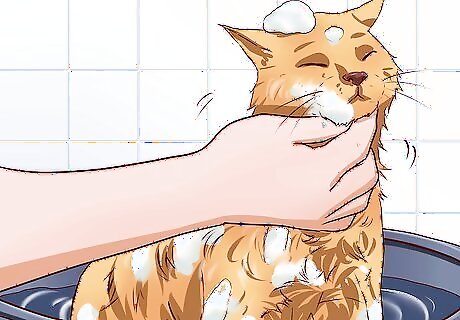
Begin bathing your cat when they are a kitten. Introduce your cat to the water when they are still a kitten so they can get accustomed to bathing. You should also let your cat get used to being in the sink or the tub a few weeks before you bathe them. Put them in the sink or tub with their favorite toys. Add some treats or catnip and let them sit in the space for five to ten minutes. This will help them associate the location with positive things and not be so spooked by the idea of a bath. Once your cat gets used to sitting in the sink or tub, fill it with an inch of water and put some toys in the water. Play with your cat around the sink or tub and encourage them to sit on the edge and play with the toys in the water.
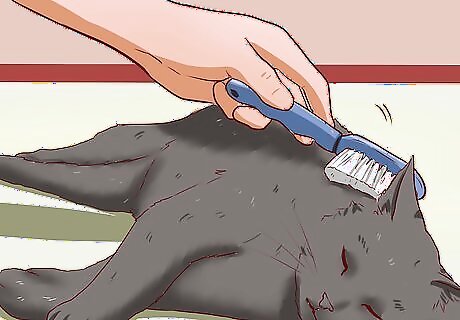
Brush your cat's coat well before a bath. Do a thorough brush of your cat's coat to remove dust, debris and loosen tangles, especially if you have a longhaired cat. A dry tangle is much easier to comb out than a wet tangle and will prevent your cat from getting irritated during the bath. Brushing your cat's coat will also remove any matted fur, which can trap soapy residue on your cat's skin and cause itchy, flaky patches. You should also cut your cat's nails before bathing so you won't get scratched and your cat won't get their nails caught on your clothing or a towel during the bath. You can also put cotton in your cat's ears to prevent any water from seeping in, and apply eye ointment in each eye so these areas are not irritated by the soap. If your cat won't let you come near their ears with cotton, skip the cotton in the ears and be sure to dry their ears well with a cotton ball after the bath.

Prepare your bathing area so the bath is quick and painless. The best way to get your cat to tolerate the bath is to bathe them quickly and efficiently. Gather the necessary supplies for your cat's bath ahead of time at the sink or tub. You will need: A pair of rubber gloves Cat shampoo: Do not use human shampoo as human skin is a different pH to cat skin and it will dry the cat's coat out. If in doubt which cat shampoo to use, oatmeal is always a good choice as it is mildly moisturizing. A large pitcher with a spray nozzle that has a gentle setting for rinsing A large towel Cotton balls A small cloth Avoid using a spray nozzle that is noisy as this will distract and irritate your cat. Use a spray nozzle on the gentle setting, attached to the tub or the sink. If you use a blow dryer instead of a towel to dry your cat at the end of the bath, make sure it has a low heat setting so it doesn't burn your cat's skin. Most cats enjoy a rub down with a towel over the loud roar of the blow dryer.
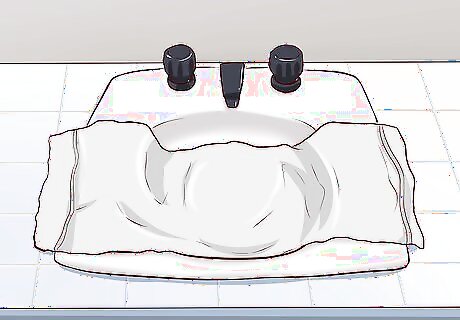
Place a towel at the bottom of the tub or sink. To avoid getting scratches on your arms or hands, give your cat a towel to sink her claws into instead. Make sure the towel is secure so it won't slip when your cat digs their claws into it during the bath. You can also place a window screen at a 45 degree angle inside the tub or sink to give your cat something to hold onto.

Ask someone to help you restrain your cat during the bath. If possible, enlist the help of your partner or a friend to assist you during the bath. Ask the person to gently hold on to your cat by their scruff as you start to bathe them, using very little force so they are not uncomfortable or in pain.
Bathing Your Cat

Close the bathroom door. Keep your cat from escaping from the bath by closing the door of the room with the sink or the tub. Fill the sink with two to three inches of lukewarm water. Never use hot water, as cats can overheat easily. Put on the rubber gloves to protect your hands and to keep the bath sanitary.

Hold your cat by the scruff of their neck. Speak gently to your cat in an assuring tone as you place them in the tub or sink. Hold them by the scruff of her neck so they stay still, or have an assistant do this. If your cat has front claws, hold them with their back to you so you cannot get scratched. Stroke your cat with one hand as you wet their neck and head with the water. Keep the water out of their eyes to avoid irritating them. Wet their back, legs, and hind end until they are sufficiently wet.
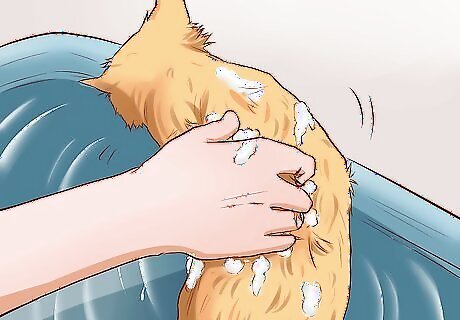
Work the shampoo into your cat's coat. Make sure you clean their back, neck, chest, belly, tail, legs, and paws. Lather their coat well so you remove all the dirt and debris. Most cats dislike getting water splashed in their face. Use a damp washcloth to clean your cat's face and head to avoid any scratching or complaining from your cat. At this point, you can use cotton balls to clean inside your cat's ears if they will let you do so.
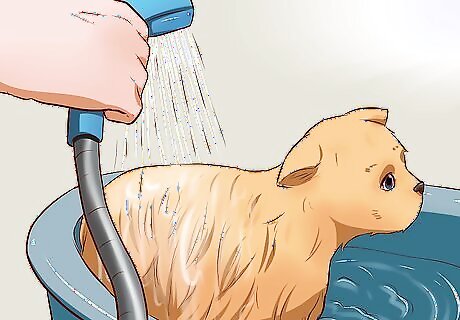
Rinse your cat's coat until it is free of any soap. You may need to rinse several times to ensure all the soap is removed. Leftover soap will irritate your cat's skin, so rinse until you don't see any more suds or soap on their coat.

Dry your cat with a towel or a blow dryer. Most cats enjoy a good rub down with a towel after a bath. Use the towel to dry your cat from head to tail. Try to absorb as much water as possible with the towel, as your cat will likely try to shake off any excess water and this could lead to puddles of water in your bathroom or kitchen. If you prefer to use a hair dryer to dry your cat, never use the hot setting as this can burn your cat's sensitive skin. Set the dryer to the warm setting and the low noise level. Reward your cat for a successful bath time with a treat, as this will remind them that bath time can be a positive experience.

Consider a professional groomer if your cat will not tolerate baths. If your cat shows a strong dislike towards bath time, despite your attempts to make them comfortable, you may want to consider bringing them to a professional groomer. The groomer can then bathe your cat for you, saving you from cat scratches and stares from an angry cat.




















Comments
0 comment